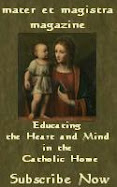Over the years, I became more and more fascinated by this occupant of Peter's Chair. Outside high theological circles and his homeland, few had heard of Karol Wojtyla. 30 years later, John Paul the Great was a veritable "household name". But who was he really and why would the Catholic Church start a canonization process for him so soon after his death?
I found answers to these questions (and many others) after reading Why He is a Saint: The Life and Faith of Pope John Paul II and the Case for Canonization by Slawomir Oder (translated by Antony Shugaar). This is one of those books every Catholic should read to understand the man who was a saint in our own time.
Oder breaks the book into three parts:
- Karol Wojtyla, the Polish Catholic priest
- Pope John Paul II, the leader of the Catholic Church in the latter part of the 20th century
- Karol Wojtyla, the mystic and spiritually-endowed man
The man who became Pope in October 1978 was very different from past popes, and not just because he was the first non-Italian in some 400 years. John Paul II was young ... a product of his uncertain times ... a man who loved tradition but didn't let it own him. From the first, the Vatican knew they had someone different in the Chair: he bucked tradition by keeping his coat-of-arms from his archbishopric; he refused to wear the papal tiara at the coronation; he opted to visit a sick friend in the hospital the day after his election -- something very human and not, some considered, very papal. But JP2 didn't let any of this bother him. As long as he was doing the good, he didn't worry about what others thought or said.
Another aspect of JP2's pontificate that shocked some, was his travels: he was away from the Vatican 8.5% of his entire pontificate (not including official vacations at Castel Gandolfo or his hospital stays). JP2 explained his travels by explaining that he was not just the successor to St. Peter, but also to St. Paul, who never stayed in one place very long. JP2 explained, "I am traveling as a teacher of faith, but also as a disciple, to learn about the life of the local church." In his travels, JP2 never allowed fear or uncertainty to stop him. In 1983 he planned a trip to Nicaragua, during this country's great problems with Communism, Sandinistas and liberation theology issues. "We must go, even though it will not be a great success. This church needs to be reinforced now, when it is passing through a very critical moment." The papal travels included trips to mend relations with other faiths -- not to assent to a "let's just all love one another" superficiality but rather to accelerate the process of communication between sister churches and begin to find common ground, to re-build the relationships necessary for unification.
Karol Wojtyla the mystic is the final portion of the book and is a bit harder to synthesize. Oder explains that, in doing an analysis of Wojtyla's life, writings, speeches and actions, five key areas help to define this man of God:
- man immersed in a relationship with God: every person has dignity and rights from conception to natural death
- faith: the only way to read and comprehend the mystery of man and that with faith, all difficulties (no matter their size or destructiveness) are overcome
- charity, the love for God and man: defines the meaning of life, a willingness to forgive, offers hope for the future, and destroys the barriers of prejudice and hatred
- dialogue: open discussion with other humans striving to find Truth in all things
- prayer: the loving conversation between man and God
Excellent for high school students and above to understand a bit more about this man many call "John Paul the Great"!
Disclaimer: This review was written as part of the Catholic book reviewer program from The Catholic Company. Visit The Catholic Company to find more information on Why He is a Saint - The Life and Faith of Pope John Paul II and the Case for Canonization and be sure to check out their great selection of baptism gifts while you are there.




 ...
... 




No comments:
Post a Comment